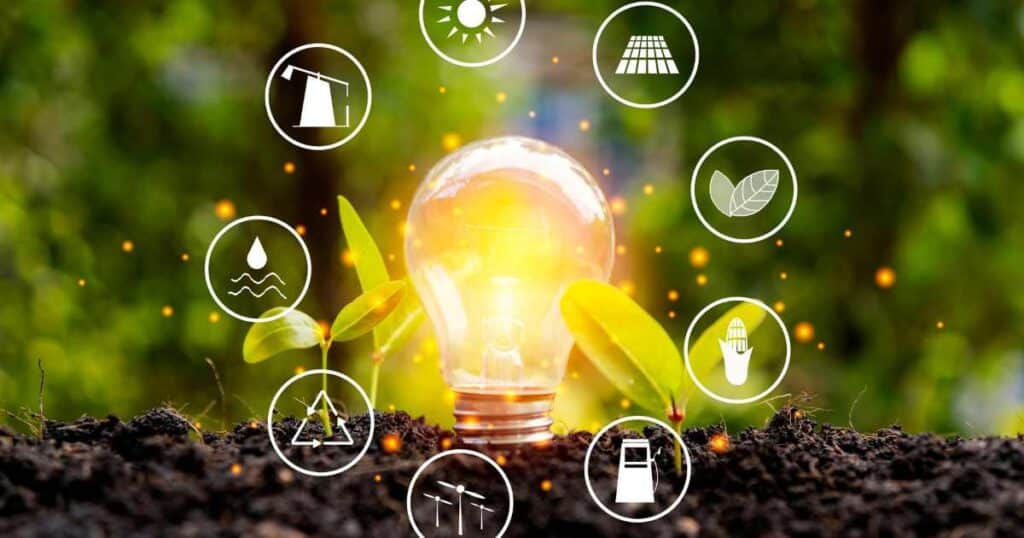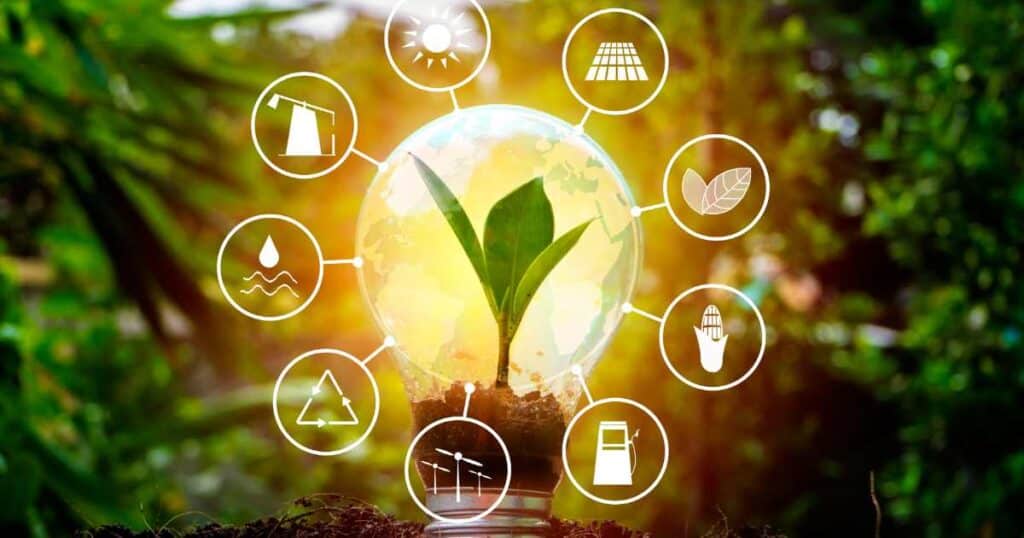What is Renewable Energy : A Definitive Guide to Renewable Energy
What is Renewable Energy – Harnessing the Power of Nature
In today’s fast-paced world, the shift towards renewable energy sources has become paramount. The captivating allure of harnessing the Earth’s natural elements to power our lives is a concept that has gained significant momentum in recent years. As we embark on this journey towards a sustainable future, understanding the intricacies of renewableenergy has never been more crucial. Our comprehensive guide delves into the remarkable world of renewableenergy, offering an insightful walkthrough of its various forms and the unprecedented benefits they offer.
From solar and wind power to geothermal and hydroelectric energy, we uncover the potential of these resources to revolutionize the global energy landscape. Whether you’re a sustainability enthusiast, an industry professional, or simply someone seeking to grasp the impact of renewableenergy, this guide equips you with the knowledge needed to comprehend, advocate, and integrate these groundbreaking solutions into your lives and businesses.
Understanding renewable energy
Renewable energy is derived from natural resources that are replenished constantly, making them an inexhaustible and environmentally sustainable option for power generation. Unlike fossil fuels, which emit harmful greenhouse gases and contribute to climate change, renewable energy sources offer a cleaner and more sustainable alternative. By harnessing the power of nature, we can reduce our reliance on finite resources and mitigate the adverse effects of traditional energy production. Understanding the principles and potential of renewable Energy is essential for realizing a future where sustainability and efficiency go hand in hand.
Renewable Energy Upgrades technologies encompass a diverse range of solutions, each with its unique characteristics and applications. From solar panels that convert sunlight into electricity to wind turbines that capture the kinetic energy of the wind, these technologies are transforming the way we power our world. By embracing renewable Energy, we can pave the way for a greener and more sustainable future, where the preservation of our planet is at the forefront of our energy endeavors.
Amidst the growing concern over climate change and the finite nature of traditional energy sources, the global consensus on the importance of renewableEnergy has never been stronger. As we strive to reduce our carbon footprint and transition towards a more sustainable energy landscape, understanding the advantages and potential of renewableEnergy is key to shaping a brighter and cleaner future for generations to come.
Advantages of renewable energy

The advantages of renewableEnergy extend far beyond environmental benefits, encompassing economic, social, and geopolitical advantages as well. One of the most notable advantages of renewableEnergy is its potential to reduce greenhouse gas emissions and combat climate change. By replacing fossil fuel-based power generation with renewable alternatives, we can significantly lower our carbon footprint and mitigate the adverse effects of global warming.
Moreover, RenewableEnergy sources offer a more stable and secure energy supply, reducing our dependence on imported fuels and enhancing energy security. This can have profound geopolitical implications, as countries can become more self-sufficient in meeting their energy needs, thereby reducing reliance on volatile global energy markets. Additionally, the decentralization of RenewableEnergy infrastructure empowers local communities and businesses, fostering economic growth and resilience.
From a financial standpoint, the declining costs of renewable energy technologies are making them increasingly competitive with traditional energy sources. This cost-effectiveness, coupled with the potential for job creation and economic development in the renewable energy sector, presents a compelling case for transitioning towards a renewable-based energy system. By embracing renewable energy, we can create a more resilient, sustainable, and prosperous future for both current and future generations.
Types of renewable energy sources
Renewable energy sources are abundant and diverse, offering a myriad of options for sustainable power generation. The primary types of renewable energy include solar, wind, hydroelectric, biomass, and geothermal energy. Each of these sources harnesses natural elements in unique ways to produce clean, renewable power, with distinct advantages and applications that cater to different environmental and geographical contexts.
The science behind renewable energy
Renewable energy is rooted in fundamental scientific principles that govern the conversion of natural resources into usable power. Whether it’s the photovoltaic effect that enables solar panels to generate electricity from sunlight or the aerodynamics of wind turbines that capture kinetic energy from the wind, the science behind RenewableEnergy is a testament to the ingenuity of human innovation. By understanding the scientific foundations of RenewableEnergy, we can appreciate the technological advancements that have propelled these solutions to the forefront of sustainable energy production.
Harnessing solar energy
Solar energy is perhaps one of the most widely recognized and accessible forms of renewable energy. By harnessing the abundant energy radiated by the sun, solar panels can convert sunlight into electricity through the photovoltaic effect. This clean and renewable energy source has seen remarkable advancements in technology and affordability, making it a compelling choice for residential, commercial, and utility-scale applications alike.
The widespread adoption of solar energy is driving a paradigm shift towards decentralized power generation and energy independence, empowering individuals and communities to embrace a sustainable energy future.
Utilizing wind power
Wind power has emerged as a dominant force in the RenewableEnergy landscape, with wind turbines harnessing the kinetic energy of the wind to generate electricity. From onshore wind farms to offshore wind installations, this clean and abundant energy source has the potential to meet a significant portion of our global energy demand. As wind turbine technology continues to evolve and improve, the efficiency and cost-effectiveness of wind power are making it an increasingly attractive option for sustainable energy production on a massive scale.
Tapping into hydroelectric power
Hydroelectric power, derived from the force of flowing water, has long been a stalwart in the realm of RenewableEnergy. By harnessing the energy of rivers, dams, and waterfalls, hydroelectric facilities can generate substantial amounts of clean electricity, often serving as reliable sources of baseload power. The versatility and reliability of hydroelectric power make it a cornerstone of RenewableEnergy infrastructure, offering a proven and efficient solution for meeting the energy needs of communities and industries.
Biomass energy and its benefits
Biomass energy utilizes organic materials such as wood, agricultural residues, and waste to produce heat, electricity, and biofuels. This versatile form of RenewableEnergy not only provides a sustainable alternative to fossil fuels but also offers opportunities for waste management and resource utilization. By converting organic matter into energy, biomass technologies contribute to reducing greenhouse gas emissions and fostering a circular economy that minimizes waste and maximizes resource efficiency.
Geothermal energy and its applications
Geothermal energy taps into the natural heat of the Earth’s core to produce electricity and heating. This reliable and constant source of RenewableEnergy has the potential to provide clean, baseload power while offering direct applications in district heating and industrial processes. As geothermal technologies continue to advance, they present an untapped reservoir of sustainable energy that can play a pivotal role in our transition toward a low-carbon future.
How to Claim Free Renewable Energy Products
To claim free renewable energy products from Renewable Energy Upgrades, follow these steps:
- Check Eligibility: Ensure you meet the criteria set by us because there are different criteria for different product products and installation. This typically includes being a resident or owning a business in Victoria or NSW. Check Products
- Contact Renewable Energy Upgrades: Reach out to us directly through our website, 1300 738 787, or email. We can provide detailed information on available products like exhaust fan seals, door seals, aircon, and heat pumps.
- Schedule an Assessment: We also conduct an assessment of your property to determine the best products for your needs.
- Review and Select Products: Choose from the products we offer that are suitable for your home or business.
- Installation: Once you’ve selected the products, Renewable Energy Upgrades will arrange for free professional installation at a convenient time.
Conclusion
As we conclude our exploration of renewable energy, it becomes evident that the potential of harnessing the power of nature is boundless. From the vast expanses of solar and wind energy to the steady flow of hydroelectric power and the hidden heat beneath the Earth’s surface, renewable energy sources offer a transformative pathway toward a sustainable and prosperous future. By embracing the diverse array of renewable energy technologies, we can redefine our relationship with energy, fostering a world where sustainability, innovation, and progress converge to shape a brighter tomorrow for all. The time to harness the power of nature is now, and through collective action and unwavering commitment, we can pave the way for a renewable energy revolution that transcends boundaries and propels us towards a greener, cleaner, and more sustainable world.


